In my IdentityConfig.cs
manager.PasswordValidator = new PasswordValidator
{
RequiredLength = 6,
RequireNonLetterOrDigit = true,
RequireDigit = true,
RequireLowercase = true,
RequireUppercase = true,
};
In my Web MVC UI, this is my action method
HttpResponseMessage responsePost = GlobalVariables.WebApiClient.PostAsJsonAsync("Account/Register", registerBindingModel).Result;
if (responsePost.IsSuccessStatusCode)
{
ViewBag.Message = "Added";
}
else
{
ViewBag.Message = "Internal server Error: " + responsePost.ReasonPhrase;
}
The code works. I can post data if it passes validation logic for passwords. But if it fails, it just throw back Internal server Error: Bad Request to my ui. But when I test it using Postman, I can see the error message from identity. Example Passwords must have at least one lowercase ('a'-'z').
Where this error message stored in HttpResponseMessage?
The API method for Register
[AllowAnonymous]
[HttpPost]
[Route("Register")]
public async Task<IHttpActionResult> Register(RegisterBindingModel model)
{
if (!ModelState.IsValid)
{
return BadRequest(ModelState);
}
var user = new ApplicationUser() { UserName = model.Email, Email = model.Email };
IdentityResult result = await UserManager.CreateAsync(user, model.Password);
if (!result.Succeeded)
{
return GetErrorResult(result);
}
return Ok();
}
private IHttpActionResult GetErrorResult(IdentityResult result)
{
if (result == null)
{
return InternalServerError();
}
if (!result.Succeeded)
{
if (result.Errors != null)
{
foreach (string error in result.Errors)
{
ModelState.AddModelError("", error);
}
}
if (ModelState.IsValid)
{
// No ModelState errors are available to send, so just return an empty BadRequest.
return BadRequest();
}
return BadRequest(ModelState);
}
return null;
}
